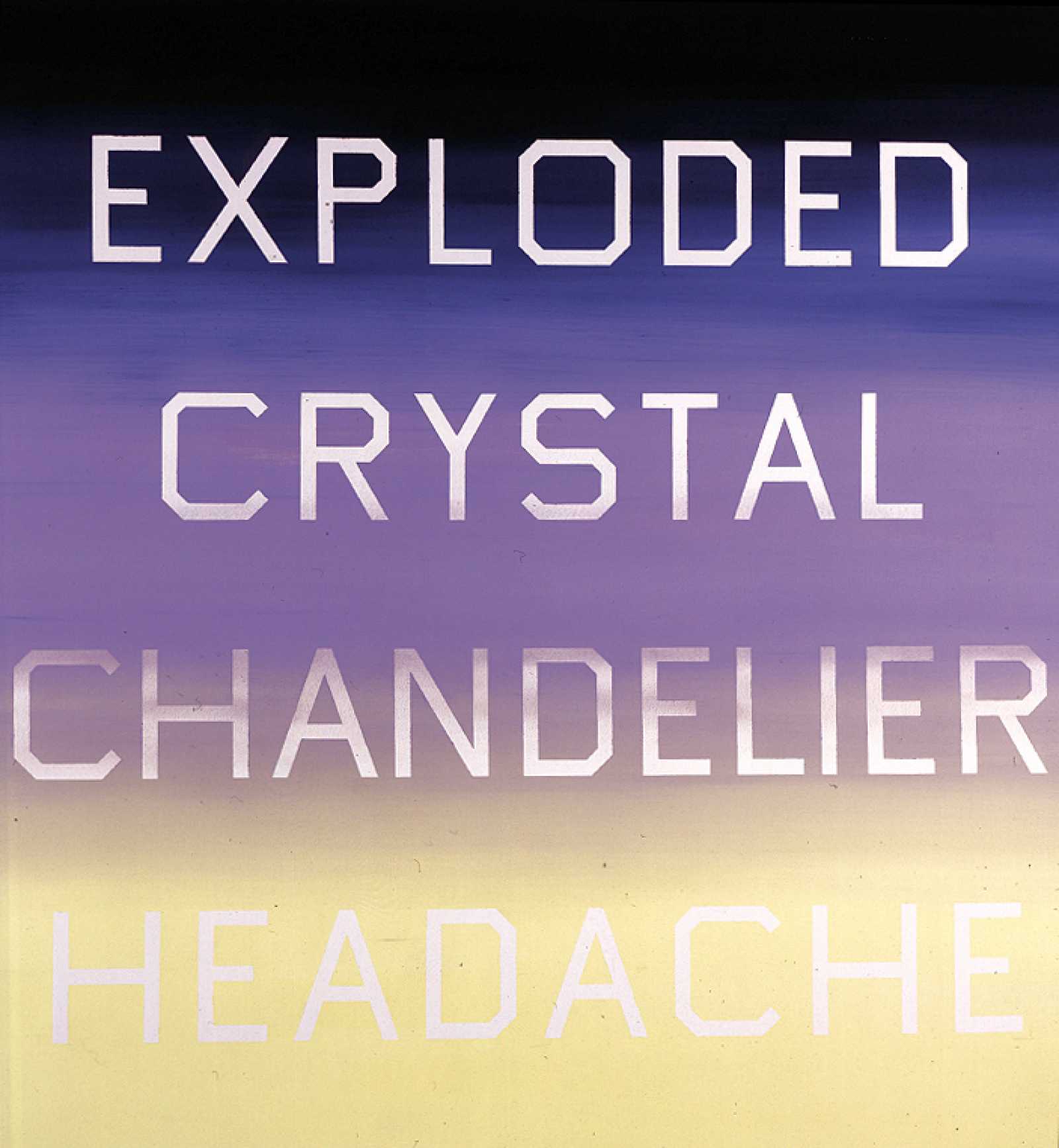Artwork of the Week
Edward Ruscha
Edward Ruscha moved to Los Angeles in 1956, where he attended Chouinard Art Institute (which became Cal Arts) and initially studied commercial design. In his early works, he mixed the painterly approach of abstract expressionism with the everyday subject matter of Pop Art—and added his interest in language and graphics—to create his unique word-paintings. His long career has also included drawings, prints, photographs, films, and artist’s books.
In the early 1980s, Ruscha produced a series of paintings in which words appear to hover over and in relation to sunsets, night skies, wheat fields, and a range of environmental and atmospheric backgrounds. Exploded Crystal Chandelier Headache depicts those four words in block letters, stenciled on top of a spectrum of shades from deep blue at the top to vibrant yellow at the bottom. His language displays his dry wit and keen observation of what may have been written, spoken, heard, or understood. Ruscha’s use of language is often formed from fleeting fragments, taken out of context and made central, to become the subject of the work itself.
Edward Ruscha, Exploded Crystal Chandelier Headache, 1987, oil on canvas, 59 x 55 inches. Museum purchase with funds provided by the Contemporary Art Council and the Selma Pearl Acquisition Fund for Contemporary Art in honor of Katherine Hough; additional support provided by Leisa and David Austin, 20-2003.
Alison Saar
Born in Los Angeles and trained at Scripps College and Otis Art Institute, Alison Saar is known for works that explore themes of cultural identity, history, and mythology. Inspired by her mother Betye, an acclaimed collage and assemblage artist, and by her father Richard, an art conservator and painter, Saar’s practice represents a confluence of art histories. Craft traditions and the use of found objects can be seen in her art.
This sculpture is drawn from a character in Harriet Beecher Stowe’s Civil War-era novel Uncle Tom’s Cabin. In the book, the slave girl Topsy is made “good” with a lock of hair from a white playmate. Departing from the story, Saar imagines a different fate for Topsy, one where the girl refuses to be pacified. Here Topsy is clad in hammered metal and is armed with a tobacco knife, a tool of plantation labor. Hair has political and personal resonance for the Black female body, and Topsy’s is an elaborate crown with cotton branches. By rendering an African American girl in armor with a bold stance, Saar questions histories of sculpture that have made monuments for men, soldiers, and gods—and envisions Topsy as a regal symbol of defiance and empowered femininity.
Alison Saar (American, born 1956), Tobacco (tobacco knife), 2018, wood, copper, ceiling tin, bronze, tar and vintage found tools, 69 × 20 × 19 inches. Promised gift of Marguerite and David M. Wilson, L2018.19.


